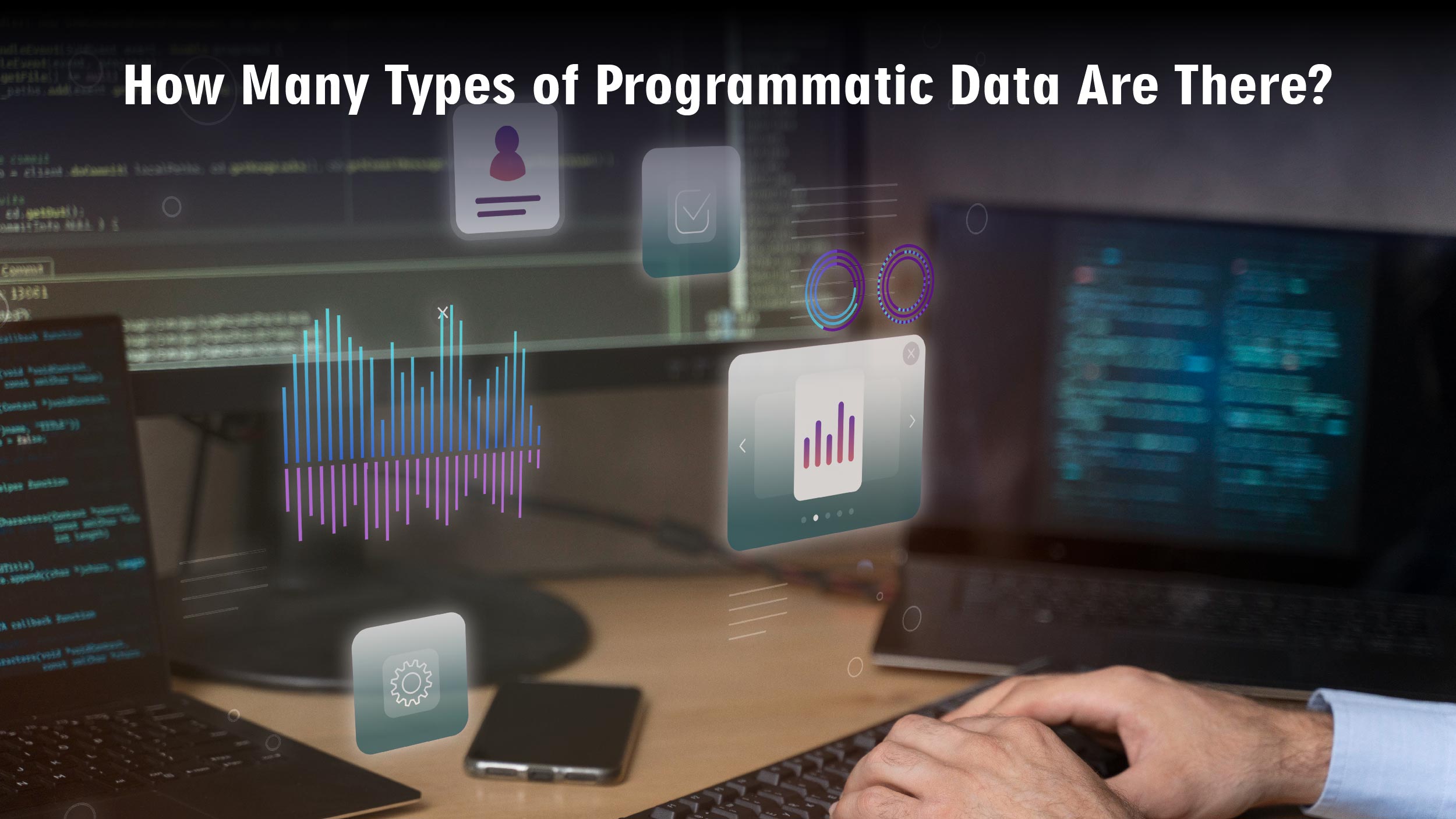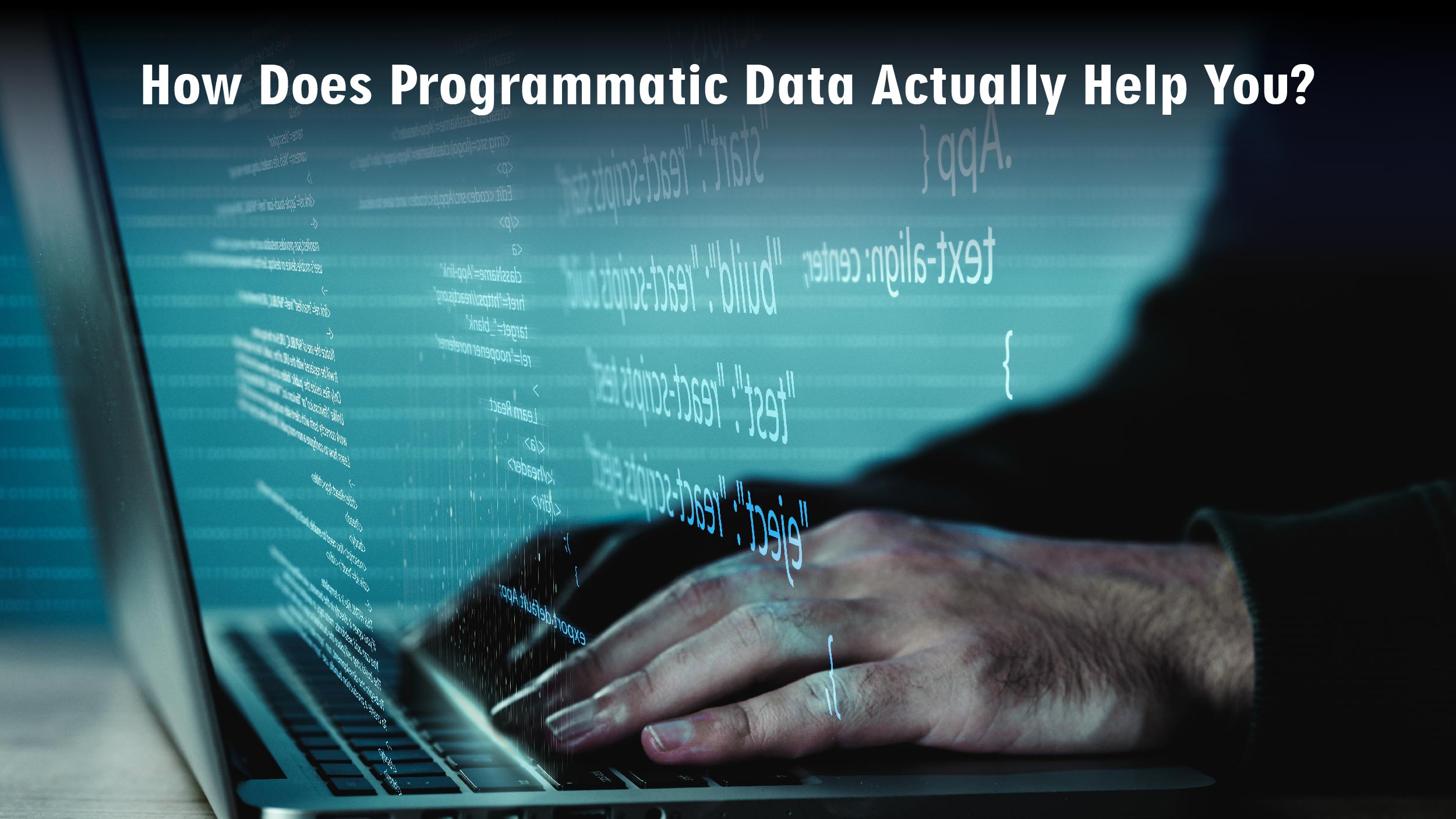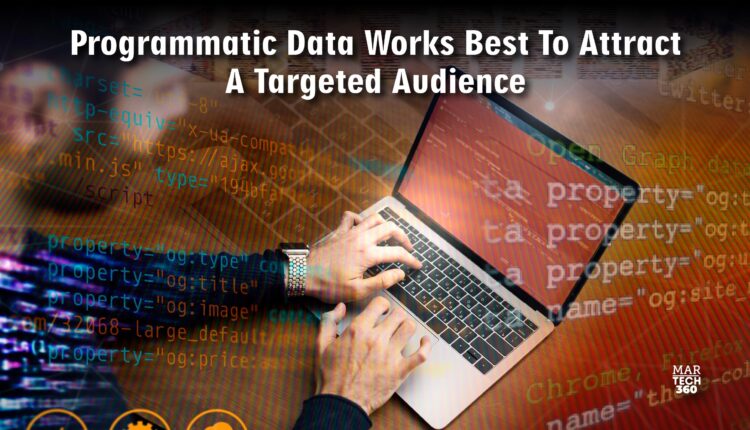In today’s data-driven world, businesses face an ongoing challenge of efficiently managing and utilizing vast amounts of information. The abundance of data generated from various sources can be overwhelming, making it difficult to extract valuable insights and make informed decisions. This is where programmatic data comes into play.
By leveraging automated processes and advanced algorithms, programmatic data offers a streamlined approach to data management and analysis, enabling businesses to unlock valuable insights and drive impactful outcomes. In this article, we will explore the concept of programmatic data and how it can help business to attract audiences.
What Is Programmatic Data?
Programmatic data is the pinnacle of “big data,” providing unprecedented levels of detail about the reach and effectiveness of media buys. And, as with all big data, its volume and complexity far outstrip any human’s ability to process it. Smart technology, on the other hand, can sift through all of this data and produce the programmatic tools, insights, and guidance we require.
This programmatic combination of natural language processing, data analysis, and benchmarking has the potential to yield significant advances in how we approach programmatic. We can unlock the full potential of programmatic data to optimize and supercharge the world of advertising if we can bridge the gap between data, insight, and action.
How Many Types of Programmatic Data Are There?
 When compared to the traditional method of purchasing media space, data is without a doubt one of the most significant new extensions in programmatic. Without the numerous data-utilization options, programmatic would almost certainly never have gained traction.
When compared to the traditional method of purchasing media space, data is without a doubt one of the most significant new extensions in programmatic. Without the numerous data-utilization options, programmatic would almost certainly never have gained traction.
In programmatic buying, advertisers will be able to use three types of data: their own data, data from publishers, and third-party data from external data suppliers. Using the data, the advertiser can find the most relevant audiences among billions of ad impressions, significantly increasing advertising efficiency.
One of the data myths is that the benefits of programmatic advertising can only be realized when the advertiser has access to their audience data to target advertising. Owning audience data is valuable and should be used to make advertising more useful to consumers, but it is not always necessary.
The key is to know who you want to reach, what you want to say, and what you want to accomplish. In general, combining your own data with that of an external partner is the most effective combination. Only a few advertisers have enough data, and enriching it would undoubtedly lead to new opportunities.
Programmatic is the most effective way to segment large amounts of data into audiences that are relevant to your brand or business. Data is central to programmatic, and marketers must understand the key distinctions between data types to make the most of them in their campaigns.
These are the main data types:
First-Party Data
The data you collect and own from your own audience is referred to as first-party data. Because this information about your customers is collected and created by the systems you use, you own it as a business. This is why first-party data is the most powerful type of data to own.
Second-Party Data
Second-party data is information that was not obtained directly from your customers. It is instead derived from first-party data provided by a partner. You can gain access to this data by arranging for a partner to share their customer data with you. This sharing of high-quality first-party data allows you to reach audiences you might not have been able to reach otherwise. This data can be of comparable quality to first-party data and provide you with a larger audience pool.
Third-Party Data
Data gathered by an outside entity. Third-party data is typically gathered anonymously from other entities and sold to other platforms. Surveys and panels, opt-in online tracking, cookie-based tracking, registration data, public records, and offline transaction data such as loyalty cards are all sources of third-party data. Because of the nature of this data source, it has the lowest quality of the three but the greatest reach.
Also Read: How to Create an Effective Brand Strategy: A Step-by-Step Guide
How Does Programmatic Data Actually Help You?
 Using programmatic data to inform your overall paid search strategy can give you a competitive advantage and help you achieve better results. Keyword strategy, ad copy, ad extensions, and landing pages are all examples of this. The more you know about your target audience and what they like, the better your chances of appealing to them will be. Data abounds in the programmatic world. Customers’ interests, likes, dislikes, geographical location, and gender, for example, can help determine keyword buying and ad messaging strategies.
Using programmatic data to inform your overall paid search strategy can give you a competitive advantage and help you achieve better results. Keyword strategy, ad copy, ad extensions, and landing pages are all examples of this. The more you know about your target audience and what they like, the better your chances of appealing to them will be. Data abounds in the programmatic world. Customers’ interests, likes, dislikes, geographical location, and gender, for example, can help determine keyword buying and ad messaging strategies.
The Google Display Network (GDN) is a vast advertising platform that delivers Google Ads across a network of over 2 million websites, YouTube videos, and applications. This extensive reach means that advertisers have the potential to connect with up to 90% of the world’s internet users. This can significantly increase your total reach. Due to the abundance of available inventory, marketers are not entirely reliant on Google inventory to reach their target audience efficiently. You can use programmatic learning to identify placements, websites, and audiences that may resonate well with your GDN audience.
Data science can be a useful tool in this regard. It is broadly divided into three categories:
Geo location
Traditional approaches use factors such as store location, population density, and so on to determine where campaigns should run. Through unsupervised geographical segmentation, the data science method is based on footfalls, media consumption, and brand and competitor store densities.
Context
In traditional approaches, the domains and channel strategies for ad placement are determined by logically complementary domains. Using data science, recommender systems can identify underutilized channels that may perform better for a specific campaign.
Audience
Traditionally, audience strategy is based on the definition of a brand’s buyer persona. The supervised classification method is used in the data science approach to identify website visitors’ personas and look-alike segments.
Although the number of options for purchasing data is expanding rapidly, the quality and functionality of the data vary greatly. There are many providers of ready-made audiences on the market, but the buyer should also ensure that the data used is of high quality and that the data providers follow the applicable laws. A trustworthy data provider can always tell you how audiences are created and what data sources are used.
Data usage in a campaign is typically priced per thousand ad impressions (CPM). The advertiser does not purchase the data but rather rents it for use in the campaign.
End Note
Programmatic data has emerged as a game-changing solution to the challenges of managing and leveraging vast amounts of information. By automating processes and utilizing advanced algorithms, businesses can streamline their data management, analysis, and decision-making. Programmatic data empowers organizations to extract valuable insights, optimize operations, and drive meaningful outcomes. As we move forward in the data-driven era, embracing this technology will be essential for businesses to stay competitive, agile, and successful in harnessing the power of data.


Comments are closed.